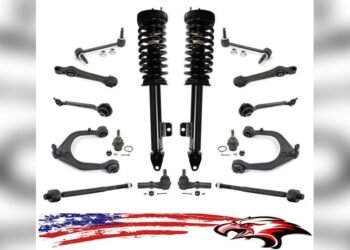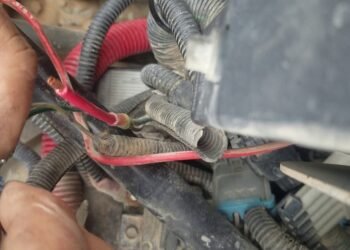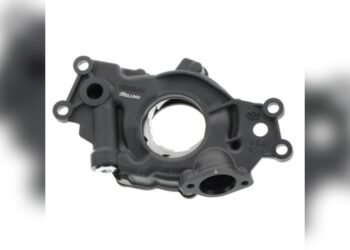If you own a Toyota Tundra and have chosen the Bilstein 5100 shocks, you probably expect a smoother, more controlled ride. But what if you start noticing a stiffer feel, unusual noises, or less comfort than promised?
You’re not alone. Many Tundra drivers experience specific issues with the Bilstein 5100 shocks that can affect your driving experience. Understanding these problems can save you time, money, and frustration. You’ll discover the most common Bilstein 5100 Tundra problems, why they happen, and what you can do to fix them.
Keep reading to make sure your Tundra rides just the way you want it—reliable, comfortable, and ready for any road.

Credit: www.reddit.com
Bilstein 5100 Tundra Ride Feel
The Bilstein 5100 shocks for the Toyota Tundra change the truck’s ride feel significantly. Drivers often notice a firmer ride compared to stock shocks. This difference affects how the truck handles bumps and road imperfections. Understanding these effects helps set realistic expectations for daily driving and off-road use.
The shocks provide better control and reduce body roll. Yet, the firmness can make small bumps more noticeable, especially at low speeds. The ride quality varies depending on speed, tire choice, and vehicle setup. Below are key factors that influence the Bilstein 5100 Tundra ride feel.
Low-speed Stiffness Effects
At low speeds, the Bilstein 5100 shocks feel stiff. This stiffness makes small bumps and rough patches more noticeable. The firm damping controls suspension movement quickly. The ride feels less cushioned than stock shocks. Drivers may feel more vibration inside the cabin.
High-speed Ride Quality
At highway speeds, the shocks improve stability. The firm setup prevents the truck from floating over bumps. This leads to better handling and more confidence behind the wheel. The ride feels smoother and more controlled on highways and freeways.
Impact Of Ride Height Adjustment
The Bilstein 5100 shocks allow front ride height adjustment. Raising the front increases spring preload. This can make the ride feel even stiffer. Drivers should expect more roughness over bumps with higher settings. Adjustments affect comfort and off-road clearance.
Tire Choice Influence
Tire type affects how the shocks perform. Stiff E-rated tires combined with firm shocks amplify bump feel. Softer C-rated tires absorb more small impacts. This results in a smoother ride on pavement. Picking the right tire can balance comfort and performance.
Vehicle Suspension Traits
The Tundra’s suspension design also impacts ride feel. Leaf springs in the rear provide a naturally firm ride. This limits how soft the overall suspension can feel. Even the best shocks cannot fully soften this stiffness. The Bilstein 5100 improves control but keeps the truck’s rugged character.
Credit: www.tundras.com
Common Issues With Bilstein 5100
The Bilstein 5100 shocks are popular for Tundra trucks, but some common problems may occur. These issues can affect your vehicle’s ride and performance. Understanding these problems helps you spot signs early. It also guides you in maintaining your shocks properly. Below are some frequent issues users report with Bilstein 5100 shocks.
Oil Leaks And Seal Failures
Oil leaks happen when seals inside the shock wear out or break. This causes fluid to escape, reducing shock effectiveness. Leaking shocks can lead to poor damping and a rougher ride. Seal failures often result from dirt, rust, or normal wear over time. Regular inspection can catch leaks early before serious damage occurs.
Uneven Tire Wear Causes
Worn or damaged Bilstein 5100 shocks may cause uneven tire wear. Poor shock absorption leads to inconsistent tire contact with the road. This creates patches of wear on the tires, shortening their lifespan. Uneven tire wear also affects vehicle handling and safety. Checking shocks and tires together helps find and fix this problem fast.
Handling And Performance Drops
Shocks that lose pressure or internal parts can cause handling issues. The truck may feel less stable during turns or braking. You might notice more body roll or bouncing over bumps. Performance drops reduce driving comfort and control. Replacing faulty Bilstein 5100 shocks restores smooth ride and better handling.
Factors Affecting Shock Longevity
The longevity of Bilstein 5100 shocks on a Toyota Tundra depends on several key factors. Understanding these helps to keep the shocks working well longer. Many drivers do not realize how much their habits and environment affect shock life.
Shocks face wear and tear from daily use and special conditions. Some conditions cause faster wear and need more care. Paying attention to these factors can save money and improve ride quality.
Driving Conditions Impact
Rough roads cause more stress on shocks than smooth highways. Potholes, speed bumps, and gravel roads increase wear. High-speed driving on uneven surfaces can damage internal parts faster. Gentle driving on paved roads helps shocks last longer.
Payload And Load Stress
Carrying heavy loads puts extra pressure on shocks. The weight compresses the suspension more, making shocks work harder. Regularly hauling heavy items can cause leaks or worn seals. Using the shocks within their load limits extends their life.
Off-road Use Consequences
Off-road driving exposes shocks to dirt, mud, and water. These elements can cause corrosion and reduce shock seals’ effectiveness. Rough trails also increase physical damage risk. Cleaning shocks after off-road trips helps prevent early failure.
Maintenance Tips
Inspect shocks regularly for leaks, dents, or rust. Replace damaged boots or seals quickly to avoid more damage. Keep mounting points tight and clean. Lubricate parts as recommended to reduce friction. Proper maintenance ensures better shock performance and longer life.

Credit: www.reddit.com
Quick Fixes And Maintenance Tips
Quick fixes and maintenance keep your Bilstein 5100 shocks working well. Small problems can be solved fast with proper care. Regular attention helps avoid bigger issues later. Follow these simple tips to extend shock life and improve truck performance.
Addressing Oil Leaks
Oil leaks signal worn seals or damage in the shock. First, clean the shock body to spot leaks clearly. Tighten mounting bolts to stop small leaks. Replace seals if leaks continue. Using high-quality shock oil during service prevents leaks and improves shock function.
Improving Tire Contact
Proper tire contact helps your truck handle better. Check tire pressure often and keep it at the recommended level. Worn shocks can cause uneven tire wear. Replace old shocks to keep tires firmly on the road. Align wheels regularly for even tire grip and longer tire life.
Restoring Handling Performance
Handling problems may arise from worn or damaged shocks. Test your shocks by pressing down on the truck corners. Replace shocks that bounce excessively or feel weak. Adjust shock settings if your model allows it. Balanced shocks improve control and ride comfort.
Regular Inspection Practices
Inspect shocks every 10,000 miles or after rough driving. Look for dents, rust, or leaks on the shock body. Check mounting hardware for tightness and wear. Listen for unusual noises during driving. Early detection of problems helps maintain shock performance and truck safety.
User Experience Insights
Understanding user experiences with the Bilstein 5100 shocks on a Tundra helps reveal real-world performance. Drivers share how these shocks affect ride comfort, handling, and control. Their insights highlight what to expect after installation and during regular use.
Many users notice changes immediately, while others observe differences after some driving time. These perspectives provide a balanced view of the shock’s strengths and challenges.
Feeling More Planted
Users often report the truck feels more stable and grounded. The shocks reduce the floaty sensation common with stock suspension. This planted feeling improves confidence, especially on highways and rough roads. The vehicle handles corners with less body roll, making driving safer and more enjoyable.
Managing Controlled Bumps
Small bumps feel firmer due to the shock’s stiff design. At low speeds, the ride can seem harsher, but the suspension controls bounce well. The shocks quickly settle after hitting bumps, preventing side-to-side sway. This control helps maintain traction and keeps the truck steady on uneven terrain.
Break-in Period Effects
The ride quality often improves after a short break-in period. Users notice the shocks soften slightly after a few days or miles. This change leads to a smoother, more balanced feel. Initial stiffness eases, making daily driving more comfortable without losing control benefits.
Frequently Asked Questions
Is The Bilstein 5100 Good For Daily Driving?
The Bilstein 5100 offers firm, controlled handling ideal for daily driving. It may feel stiff on small bumps but improves ride quality at higher speeds. Proper tire choice and break-in enhance comfort, making it a reliable option for everyday use.
Do Bilstein 5100 Shocks Ride Rough?
Bilstein 5100 shocks provide a firmer ride, especially at low speeds, making small bumps feel more noticeable. They improve control and reduce floatiness, offering a smoother experience at highway speeds. Ride stiffness may increase if the vehicle is lifted or paired with stiff tires.
How Many Miles Does The Bilstein 5100 Last?
Bilstein 5100 shocks typically last between 50,000 to 70,000 miles. Harsh conditions and heavy loads reduce lifespan. Regular maintenance extends durability.
Is Bilstein Better Than Oem?
Bilstein shocks offer firmer, more controlled handling than OEM. They improve stability and reduce body roll but may feel stiffer on small bumps. Many drivers prefer Bilstein for performance and durability over standard OEM shocks.
What Are Common Problems With Bilstein 5100 Shocks On Tundra?
Bilstein 5100 shocks may cause a stiffer ride and increased bump feel at low speeds.
Conclusion
Bilstein 5100 shocks offer improved handling and control for your Tundra. Some users notice a firmer ride, especially on small bumps. Proper maintenance and careful driving can reduce common issues. Regular checks help spot leaks or wear early. Adjusting settings and tire choice affects comfort too.
Overall, these shocks balance performance with durability for many drivers. Understanding potential problems helps you get the best experience. Keep an eye on your suspension for smooth, safe rides.
















